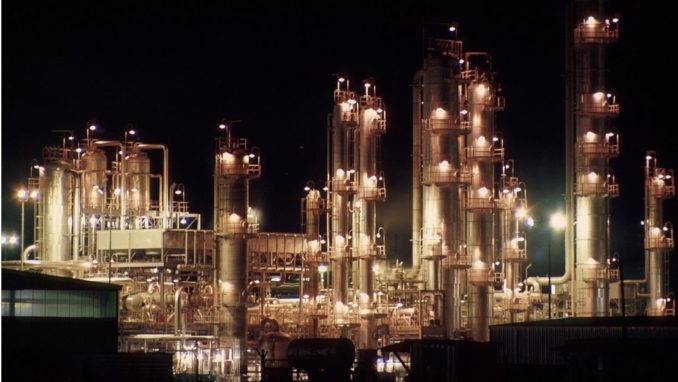
Jim Evans, CC BY-SA 4.0, via Wikimedia Commons
Do not believe government pronouncements that the economy is rebounding from very minimal damage caused by unprecedented Covid-19 inspired closures of businesses or that the damage was very mild anyway. Government will use it favourite statistic of the health of the economy to justify its actions–Gross Domestic Product (GDP).
Essentially GDP is the total of spending in the economy. It is a Keynesian term that elevates a concept called “aggregate demand” as most important. Not production and especially not savings. But aggregate demand, also known as spending.
Keynesians fear savings most of all. Now, you and I know that we can become wealthier only by saving some of our income and investing it wisely for the future. But Keynesians have a concept called “The Paradox of Thrift”, whereby they claim that the economy enters a death spiral from reductions in spending. Individually savers are better off, they say, but collectively the economy suffers. For example, the new auto that we savers do not buy, but rather keep our old one in good repair for a few more years, denies the automakers and all who work for them the money they need to continue production. Layoffs and plant closings ensue. The reduction in aggregate demand ripples outward, bankrupting more and more support businesses and their employees. This is the simplistic Keynesian view of savings.
But what happens to the money that we do not spend on as many new cars? Is it thrown down a rat hole? No, of course not. It is invested in longer term production processes that will yield even more wealth than if we had continued our former practice of buying new cars more often. We see this in our personal financial profiles, as our savings accounts increase at a compounding rate, allowing us to live a more comfortable existence later in life. This is the truth that used to be drilled into all of us before governments’ in-house economists propagandised that by being frugal we were denying our fellow citizens what was rightfully theirs: i.e. our money and our future. It’s nonsense.
But, you may ask, where does GDP enter the picture? Remember, aggregate demand is measured by spending, which becomes GDP. There are two critical problems with GDP. One, it does not capture spending on longer term and intermediate term production, but rather mostly retail sales. Headlines that retail sales are up are supposed to generate confidence that all is well. But is it? If you and I spend all our savings and even borrow more, we would soon find ourselves in the poor house. But Keynesians would say that our individual financial difficulties were good for the economy!
But the biggest problem with GDP is the most obvious one–that GDP measures price increases. In the past month or so the price of a gallon of regular gasoline in Pennsylvania has gone up from just under $2.50 to around $3.00. That’s a twenty percent increase in price. Since gasoline consumption changes little in the short run, selling the same volume of gasoline at a higher price causes GDP to go up.
The best measure of long term price inflation is not necessarily measuring retail prices in the short run but measuring the increase in the money supply over time. If the money supply increases, eventually this increase will work its way into the price structure. It can do nothing else. The two statistics that best measure the money supply are the “Monetary Base” and “M2”. The monetary base consists of all cash, wherever held, and bank reserves held at the Federal Reserve Bank which may be converted into cash on demand by the banks. It is called the monetary base, because banks can create money out of thin air by pyramiding loans on top of their reserves at roughly a ten to one ratio. Just after the 2007 Subprime lending debacle the monetary base was $.910 trillion. The Fed juiced the monetary base to bail out the banks, so that in January 2020, just prior to the Covid-19 lockdowns, it stood at $3.443 trillion. That’s a 278% increase. After the Covid-19 lockdowns the Fed juiced the monetary base again. Today it stands at $5.248 trillion, a further increase of 52% over the already inflated January 2020 level. And we haven’t seen the effect of the recently passed $1.9 trillion stimulus bill!
M2, the broadest measure of the money supply that can be accessed by the public on demand, has exhibited similar increases. M2 stood at $7.215 trillion in 2008, then was juiced to $15.419 trillion by January of last year. It now stands at $19.384 trillion. That’s a 169% increase, and tracks very well with independent measures of price inflation of ten percent compounded per year (ShadowStats and the Chapwood Index).
I leave it to the reader to decide his own, personal price inflation rate. But here’s a hint. What was the price of a gallon of regular gasoline in October 2008 when Barack Obama was elected president? I remember. It was $1.79. Today it’s around $3.00. How about the price of other essentials? How about real estate taxes? Food? Utilities? The lesson is this–don’t be fooled by government statistics, especially GDP. The Covid-19 lockdowns have caused immense damage to the economy. It is a dead weight loss that can never be recovered.
© Patrick Barron 2021 Website
The Goodnight Vienna Audio file



